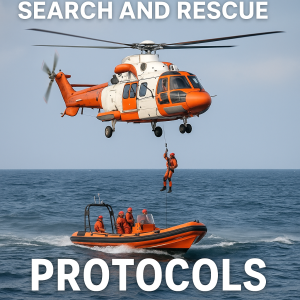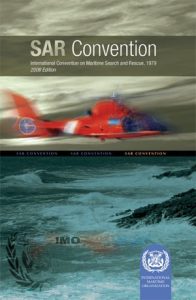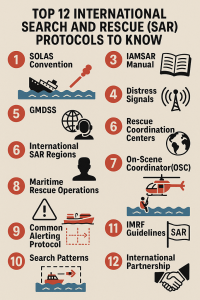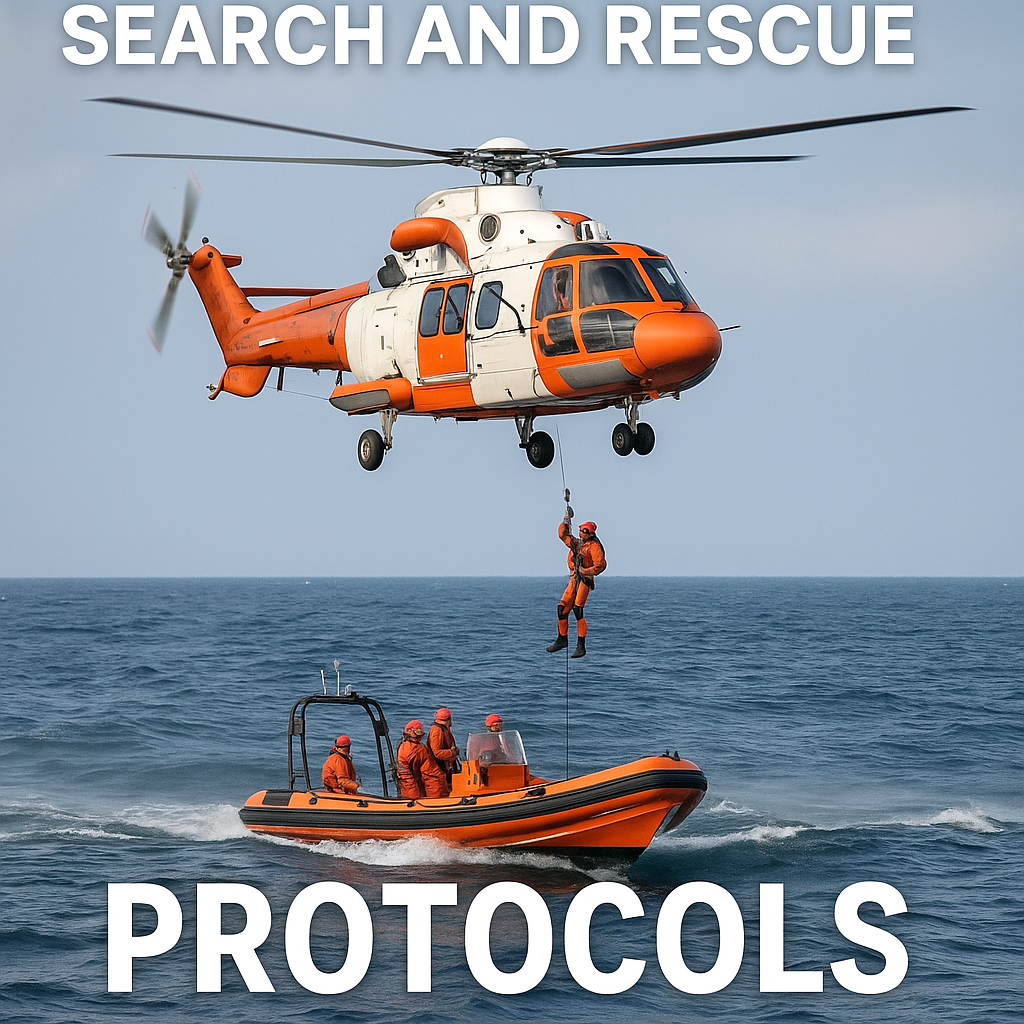Explore the top 12 international maritime search and rescue (SAR) protocols that save lives at sea. Learn key operational standards, real-world examples, and global cooperation strategies.

Why Maritime Search and Rescue Protocols Matter
Every year, thousands of lives are at risk at sea—whether due to natural disasters, vessel collisions, medical emergencies, or piracy. Search and Rescue (SAR) operations are the backbone of maritime safety, coordinated by global agreements and precise protocols. The International Convention on Maritime Search and Rescue (SAR Convention), adopted in 1979 and amended since, forms the cornerstone of these efforts. In this article, we explore 12 critical SAR protocols recognized and practiced internationally—each one a life-saving pillar.
Understanding these protocols is vital not only for search and rescue authorities, but also for seafarers, shipping companies, port authorities, and maritime students. In an age of increasing global trade and climate-driven maritime risks, effective SAR coordination is more relevant than ever.
1. Establishment of Maritime Rescue Coordination Centres (MRCCs)
Every coastal state that is party to the SAR Convention must establish an MRCC—a nerve center for SAR operations. These centers are responsible for receiving distress alerts, assessing the situation, and coordinating resources.
Real-World Example:
In February 2023, the Greek MRCC successfully coordinated the rescue of 104 migrants from a capsized vessel in the Aegean Sea—demonstrating rapid response and international coordination with nearby Turkish authorities (IMO).
2. Search and Rescue Regions (SRRs)
The world’s oceans are divided into SAR Regions under the International Maritime Organization (IMO). Each country manages its SRR and is expected to provide uninterrupted coverage.
Analogy:
Think of SRRs as maritime “zip codes”—each region has a designated coordinator responsible for any distress within their area.
3. Use of the Global Maritime Distress and Safety System (GMDSS)
The GMDSS enables automated distress communication via satellite and terrestrial systems. It’s mandatory under SOLAS for vessels over 300 GT.
Key Equipment Includes:
- EPIRBs (Emergency Position Indicating Radio Beacons)
- SARTs (Search and Rescue Transponders)
- NAVTEX receivers
4. Immediate Acknowledgment and Response Protocol
Upon receiving a distress alert, MRCCs must immediately acknowledge it, assess the credibility, and begin coordination. Time is life.
Compliance Note:
Failure to respond promptly can violate SOLAS Chapter V regulations and compromise lives.
5. On-Scene Coordinator (OSC) Appointment
When multiple units (ships, helicopters, aircraft) are involved, one must act as the OSC. This person or ship directs search patterns, assigns sectors, and manages communication.
IMO Guidance:
The IAMSAR Manual (Volume II) provides detailed procedures for designating and training OSCs (IMO Model Courses).
6. Aircraft Coordination and Airspace Management
Helicopters and fixed-wing aircraft play crucial roles in spotting persons, dropping life-saving equipment, and lifting survivors. Safe airspace management is crucial.
Case Study:
In 2019, Japan Coast Guard helicopters rescued survivors from Typhoon Hagibis-affected areas using pre-coordinated air corridors with MRCC Yokohama.
7. Coordination Between Adjacent SAR Services
Cross-border coordination is central to SAR effectiveness. The SAR Convention obliges states to work together regardless of jurisdiction.
Example:
Joint SAR drills are regularly held between AMSA (Australia) and RCC New Zealand, improving interoperability.
8. Mass Rescue Operations (MROs)
When passenger vessels or aircraft are involved, SAR needs escalate dramatically. Mass Rescue Operations protocols include passenger accounting, triage zones, and hospital ship deployment.
Notable Reference:
The Baltic Sea Passenger Ferry Drill (2021) involved over 500 simulated evacuees, coordinated by Denmark and Finland (EMSA).
9. Standardized Search Patterns (Parallel, Sector, Expanding Square)
SAR units apply standardized search patterns based on weather, last known position, and drift analysis.
Educational Note:
These patterns are part of STCW training for officers (IMO Model Course 1.26).
10. Rescue and Recovery Safety Protocols
Safety during recovery involves stabilization of survivors, hypothermia assessment, and minimizing risk to rescuers.
Industry Best Practices:
Guidance from P&I Clubs and MAIB investigations highlights the importance of crew PPE and man-overboard drills.
11. Medical Evacuation (MEDEVAC) Procedures
If someone onboard suffers a serious injury or illness, MEDEVAC coordination with helicopters or nearby vessels is activated.
Data Insight:
According to IHS Markit, MEDEVACs from offshore installations in the North Sea increased by 18% in 2023 due to heightened drilling activity.
12. Post-Rescue Psychological Support and Debriefing
Rescue doesn’t end with physical recovery. Psychological first aid and operational debriefs ensure long-term well-being for both survivors and rescuers.
Human Element:
The Nautical Institute encourages trauma awareness training as part of holistic SAR operations (IMAREST).


FAQ: Maritime SAR Protocols
1. What is the legal basis for international SAR protocols?
The 1979 SAR Convention by IMO, supported by SOLAS and regional agreements.
2. Who coordinates SAR at sea?
Maritime Rescue Coordination Centres (MRCCs) are the primary coordinators.
3. Are private vessels obligated to assist in rescues?
Yes, under SOLAS Regulation V/33 and customary international law.
4. How do ships know which MRCC to contact?
The IAMSAR Manual and IMO’s GISIS portal list all RCC contact details.
5. What happens if a state fails to conduct SAR properly?
They may face international scrutiny, reputational damage, and liability under humanitarian law.
Conclusion: Coordinated Protocols, Shared Responsibility
From the Arctic to the Indian Ocean, the effectiveness of maritime SAR relies on synchronized global protocols. As maritime risks evolve—through climate change, increased traffic, or geopolitical tensions—investing in coordinated SAR systems and training becomes not only prudent, but essential. The protocols outlined above are not mere checklists—they represent our collective maritime safety net.
References
- IMO. (2024). Search and Rescue
- IAMSAR Manual Volumes I–III. International Civil Aviation Organization & IMO.
- EMSA. (2023). Mass Rescue Operations – Baltic Sea Report
- The Nautical Institute. (2022). Human Element and SAR.
- IHS Markit (2024). North Sea MEDEVAC Statistics.
- IMO Model Courses (2023). Maritime Training Programs.
- SOLAS Consolidated Edition (2020). Chapter V – Safety of Navigation.

